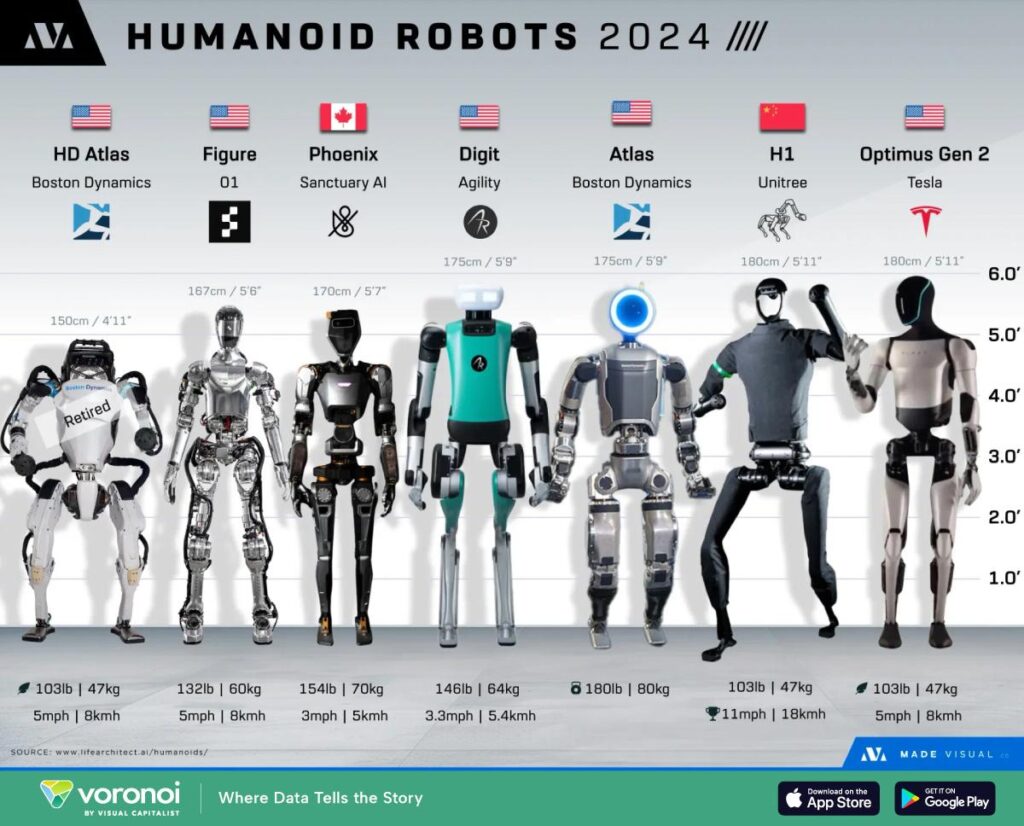In a striking display of technological progress and persistent challenges, China’s latest humanoid robot competitions-dubbed the “Box, run, crash” games-have captured global attention. Showcasing robotic contenders capable of complex movements such as boxing, running, and navigating obstacles, the events highlight both the rapid advancements and notable limitations in the country’s artificial intelligence and robotics sectors. As these humanoid robots push the boundaries of agility and autonomy, experts say the games offer a revealing glimpse into the future of robotics, while underscoring the hurdles that remain before machines can fully replicate human physicality.
China’s Humanoid Robot Games Showcase Breakthroughs in AI and Robotics
In a vibrant demonstration of artificial intelligence and robotics integration, China’s humanoid robot competitions have unveiled both impressive strides and notable challenges. These games, often hosted in state-of-the-art facilities, pit sophisticated androids against one another in various physical and strategic tasks. Robots showcase capabilities such as obstacle navigation, coordinated movement, and decision-making under pressure. While many of the humanoids excel in agility and responsiveness, the events also expose limitations in balance and adaptability, especially when unexpected variables arise.
Among the highlights were intense contests where robots engaged in rapid obstacle courses, wrestling matches, and precision tasks. The games provided a unique lens into the progress of AI algorithms combined with mechanical engineering. Key achievements include:
- Enhanced real-time learning: Robots adjusted tactics mid-game based on opponent behavior.
- Improved motion fluidity: More human-like fluid movements reduced crashes and falls.
- Robust sensor integration: Better environmental awareness facilitated complex maneuvers.
| Category | Strengths | Weaknesses |
|---|---|---|
| Mobility | Quick obstacle navigation | Balance issues on uneven terrain |
| AI Decision-Making | Adaptive strategies | Struggled with unpredictable patterns |
| Durability | Withstood high-impact collisions | Frequent mechanical wear during prolonged use |
Challenges in Mobility and Responsiveness Reveal Current Tech Limitations
Despite impressive strides in robotics, the recent competitions highlighted the ongoing struggle with achieving fluid mobility and quick responsiveness in humanoid robots. Many robots, though designed for agility, were prone to frequent tumbles and awkward pauses when reacting to fast-paced scenarios. This exposes fundamental challenges in sensor integration and real-time processing, where milliseconds of delay severely impact performance. The current technology, while promising, still falls short of mimicking the natural dexterity and reflexes of humans.
Participants noted that balancing speed with stability remains a significant hurdle. The reaction algorithms often failed to adapt dynamically to unexpected obstacles or opponent maneuvers, limiting effective autonomous decision-making. The table below compares key metrics observed during the games:
| Robot Model | Top Speed (m/s) | Response Time (ms) | Stability Score (1-10) |
|---|---|---|---|
| Qilin-X | 1.8 | 150 | 6 |
| Iron Jade | 2.1 | 200 | 5 |
| Dragon Pulse | 1.5 | 180 | 7 |
- Sensor lag contributes to delayed obstacle detection.
- Mechanical limitations restrict rapid directional changes.
- Software delays impact split-second decision making.
Experts Advocate for Enhanced Sensor Integration and Real-Time Processing Improvements
Leading robotics specialists argue that to push China’s humanoid robots beyond their current capabilities, a significant upgrade in sensor integration and real-time data processing is imperative. The recent robot games showcased impressive mechanical agility but also highlighted the robots’ struggle with dynamic environments, often resulting in collisions or miscalculations during rapid movements. Experts emphasize that current sensor arrays-mostly reliant on basic visual and tactile inputs-lack the sophisticated multi-sensory feedback needed for fluid and adaptive interaction. Enhancing these systems with high-fidelity sensors, such as advanced LIDAR and depth cameras, alongside real-time AI-driven processing, could dramatically improve situational awareness and decision-making under pressure.
Key technical recommendations include:
- Integration of heterogeneous sensors: combining optical, ultrasonic, and inertial measurement units for robust environmental mapping.
- Upgraded onboard processors: to handle complex algorithms without latency, enabling near-instantaneous reactions.
- Machine learning optimization: real-time adaptation to unpredictable variables during competitive scenarios.
| Aspect | Current Status | Proposed Improvement |
|---|---|---|
| Sensor Types | Visual + Basic Touch | Multi-modal (LIDAR, ultrasonic, IMU) |
| Processing Speed | Limited by hardware | AI-optimized real-time units |
| Movement Precision | Prone to error in fast-paced tasks | Adaptive algorithms with feedback loops |
Final Thoughts
As China continues to push the boundaries of robotics with its humanoid games, the developments highlight both remarkable technological strides and persistent challenges. While the boxers may stumble and the runners falter, each match offers valuable insights into the complex interplay of artificial intelligence, mechanics, and human ingenuity. These competitions not only showcase progress but also underscore the road ahead in making truly autonomous humanoid robots a practical reality.
